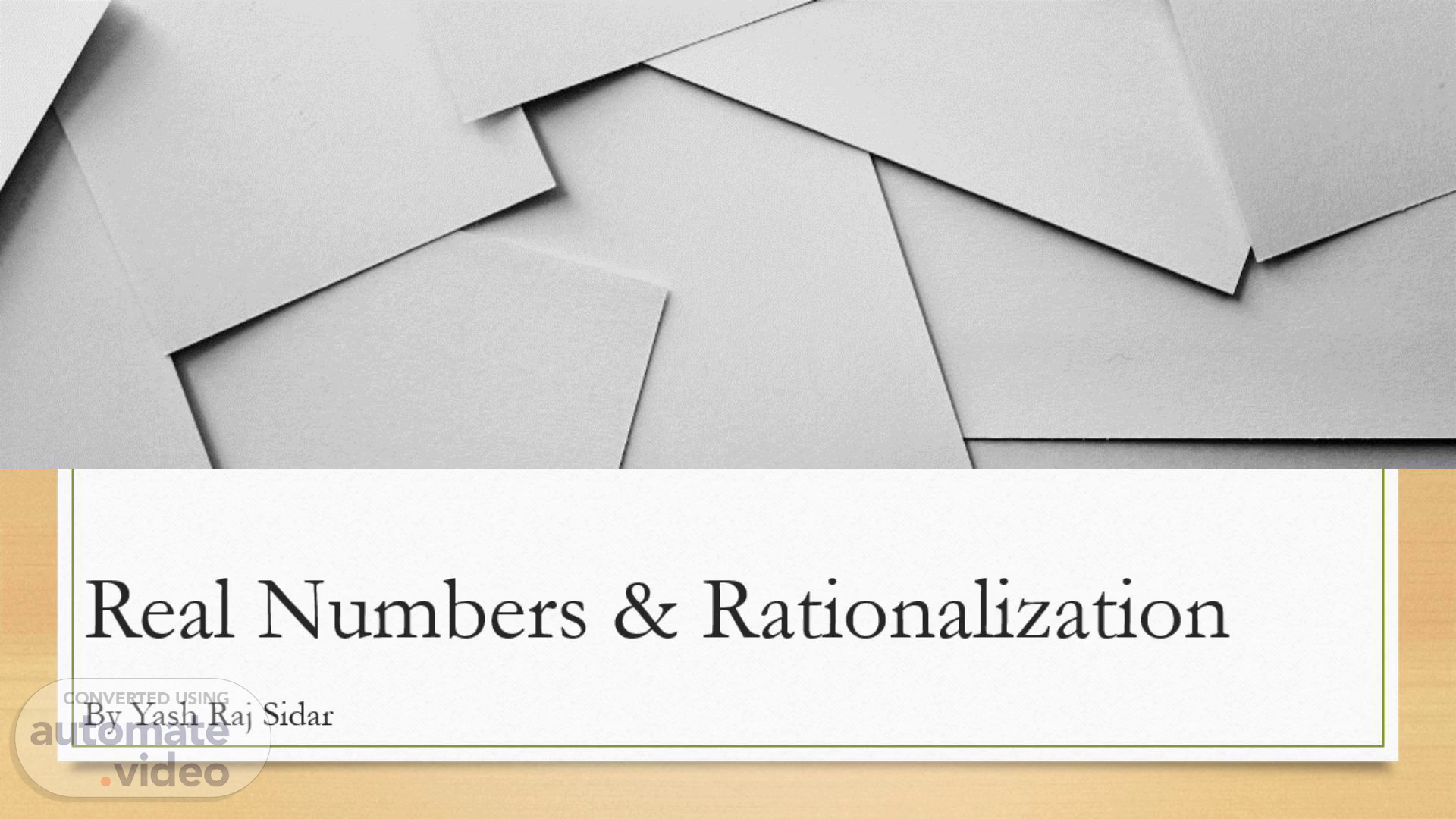
Real Numbers & Rationalization
Scene 1 (0s)
[Audio] Real Numbers & Rationalization By Yash Raj Sidar.
Scene 2 (4s)
[Audio] Defining Real Numbers Real Numbers Real numbers include all the rational and irrational numbers, and they can be represented on the number line. They have the property of closure under addition, subtraction, multiplication, and division. Characteristics Real numbers are continuous and infinite. They can be positive, negative, or zero. The decimal form of real numbers could be finite or non-terminating, either repeating or non-repeating. Representation Real numbers can be represented as fractions, decimals, or integers. They are widely used in scientific, economic, and everyday contexts to describe quantities and measurements. Photos provided by Pexels.
Scene 3 (53s)
[Audio] Rational Numbers Representation Properties Rationalization Rational numbers have the property of closure under addition, subtraction, multiplication, and division. They can be positive, negative, or zero, and are a vital part of the real number system. Rationalization involves converting a fraction with an irrational denominator into an equivalent fraction with a rational denominator, enabling easier mathematical operations. Rational numbers can be expressed as fractions, where the numerator and denominator are integers, and the denominator is not zero. They are also terminating or repeating decimals..
Scene 4 (1m 33s)
[Audio] Irrational Numbers Concept Irrational numbers cannot be expressed as fractions, and their decimal forms are non-terminating and non-repeating. They are numbers that cannot be written as a simple fraction. Number Line On the number line, irrational numbers are represented as non-repeating, non-terminating decimals. They are located between rational numbers, filling in the gaps on the real number line. Properties Irrational numbers possess the property of being non-repeating and non-terminating in decimal representation. They are essential for representing quantities such as the sides of a square or the value of π. Photos provided by Pexels.
Scene 5 (2m 12s)
[Audio] Rationalizing Denominators Fraction Simplification Methods Rationalizing denominators involves simplifying fractions by getting rid of radicals or irrational expressions from the denominator. This process makes mathematical operations, such as addition and multiplication, more straightforward. Common methods for rationalizing denominators include multiplying the fraction by the conjugate of the denominator or using the properties of radicals to eliminate the irrational part. Applications Rationalizing denominators is crucial in various mathematical principles, like simplifying trigonometric expressions and solving quadratic equations..
Scene 6 (2m 55s)
[Audio] Number Line Representation Examples Irrational numbers, such as the square root of 2 or π, are placed on the number line between rational numbers. Their placement reflects their non-repeating, non-terminating decimal representations. Visualization Representing irrational numbers on the number line provides a visual understanding of their position and helps in comparing and ordering them relative to rational numbers. Infinite Nature The number line representation showcases the infinite nature of real numbers, where rational and irrational numbers form a continuous and unbroken sequence. Photos provided by Pexels.
Scene 7 (3m 38s)
[Audio] Case Study: Real World Application Example Problem Engineering Context Financial Context The case study will present a real-world problem that can be solved through rationalization and factorization, demonstrating the practical application of these mathematical concepts in engineering or financial scenarios. The case study will showcase how rationalization and factorization techniques are applied to optimize engineering designs, calculations, or simulations in the real world. The case study will highlight financial models or investment scenarios where rationalization and factorization play a significant role in analysis, risk assessment, or decision-making processes..